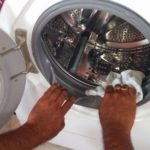1. Choose energy-efficient devices
Newer generation electrical devices are designed to save energy. For instance, televisions with LED screens and LED lighting bulbs consume less electricity compared to older models.

2. Change your habits in using electrical devices
- For refrigerators:
– Avoid frequently opening and closing the refrigerator door to prevent excessive loss of cold air.
– Adjust the temperature to the necessary level, as every 10 degrees colder increases energy consumption by 25%.
– Regularly check the rubber gasket on the refrigerator door to ensure it is properly sealed and prevent unnecessary energy usage.
- For air conditioners:
– Maintain a stable temperature of 25 – 27 degrees Celsius for optimal efficiency. Decreasing the temperature by 5 degrees Celsius can increase electricity consumption by an additional 40%.

– Use fans to improve air circulation, reducing the workload of the air conditioner.
– Regularly clean the air conditioner to maintain its efficiency and prevent increased power consumption and breakdowns.
- For electronic devices:
– Unplug electronic devices, such as TVs and computers, when not in use, as they still consume electricity even when in standby mode.

– Reduce the brightness of screens, TVs, and computers, or use power-saving modes to conserve energy.
- For lighting devices:
– Replace fluorescent bulbs with LED bulbs and turn off unnecessary lights when not in use to save electricity.
3. Paint walls and use objects in the room with bright colors
Using brightly colored wall paint and furniture helps improve light reflection. Additionally, using low-energy bulbs can effectively illuminate the entire room.

Bright colors absorb less heat, especially when exposed to direct sunlight. Moreover, bright colors have a positive psychological effect compared to dark colors.
4. Utilize alternative energy sources
Alternative energy sources, such as wind energy and solar energy, are gaining popularity. They provide an alternative to traditional energy sources like hydropower, which have drawbacks.
Solar energy is commonly used in daily life through solar panels and solar water heaters.

Although the initial installation cost can be high, using solar energy for heating water or generating electricity can lead to significant long-term savings for your household.
By applying these tips, you can use electricity wisely to save energy while still meeting the electricity needs of your household.
What To Keep in Mind When Cleaning a Washing Machine at Home
Whether you’re trying to save money or simply keep your clothes looking and feeling their best, cleaning these three areas of your washing machine can make a significant difference in its efficiency and effectiveness. Taking the time to attend to these three areas is an important part of maintaining your home’s laundry.







































